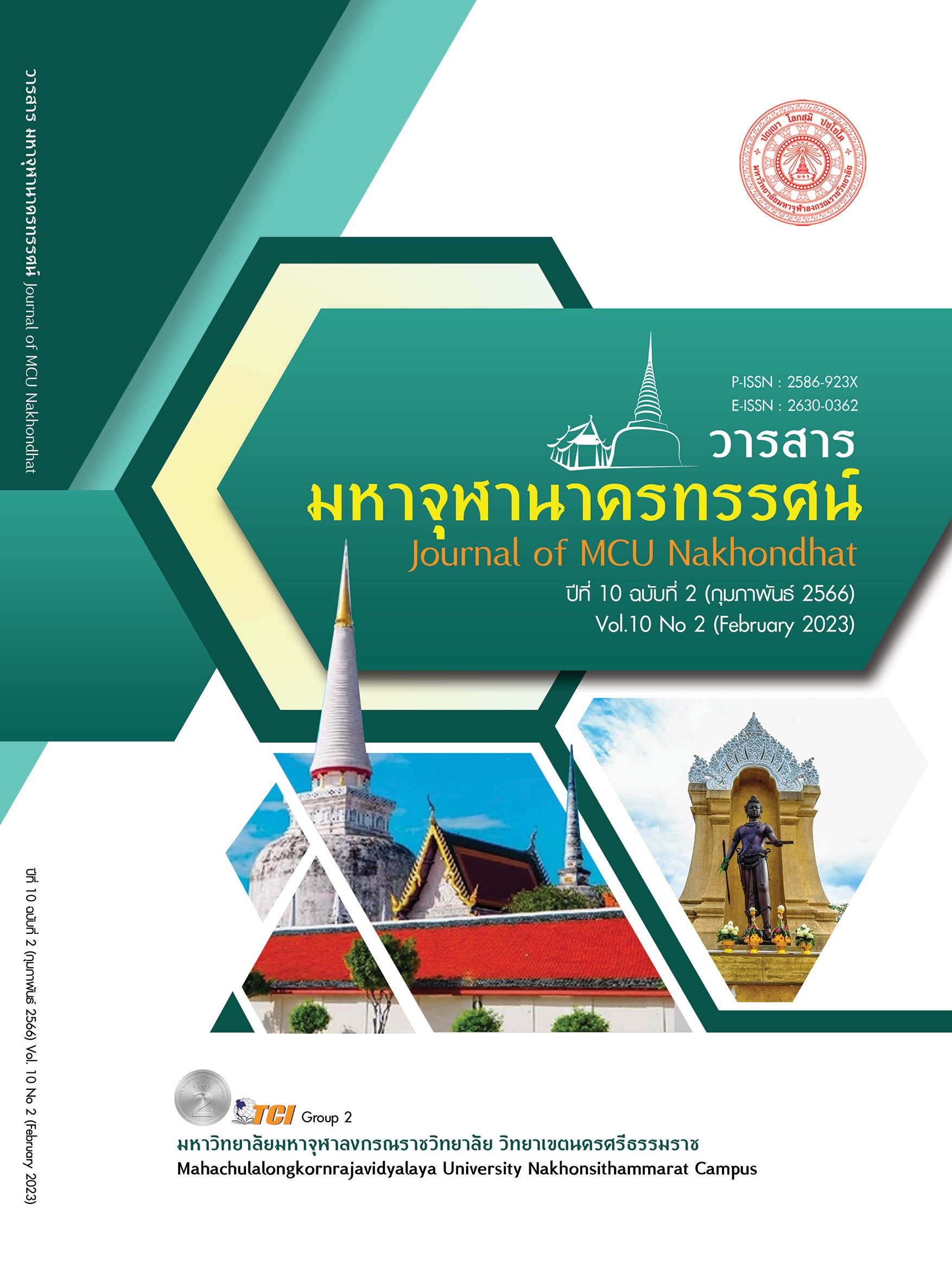สื่อและการสูญเสียความหมายของความจริงในยุคหลังความจริง: รายการเล่าข่าวในสื่อโทรทัศน์
Main Article Content
บทคัดย่อ
ในปัจจุบันเส้นแบ่งระหว่างรายการข่าวกับรายการบันเทิงและรูปแบบการเลือกรับชมของผู้รับสารที่ให้ความสำคัญกับความบันเทิงเป็นหลักนั้นทำให้รายการเล่าข่าวให้ความสำคัญในการสร้างความบันเทิงหรืออารมณ์ร่วมกับผู้รับสารเป็นหลัก โดยจะเห็นได้จากการเลือกข่าวที่นำมานำเสนอในรายการข่าวปัจจุบันที่มักเลือกข่าวที่สะเทือนอารมณ์ ไม่ว่าจะเป็นข่าวประเภทใดก็ตาม ปรากฏการณ์ที่ความจริงและข้อเท็จจริงที่สูญเสียความหมายนี้ยังลุกลามไปถึงความจริงทางวิทยาศาสตร์อีกด้วย เช่น ในกรณีโรคระบาดโควิด-19 และการปฏิเสธไม่เชื่อนักวิทยาศาสตร์สิ่งแวดล้อมเรื่องภาวะโลกร้อน เป็นต้น การถูกท้าทายและสูญเสียความหมายของความจริงทางวิทยาศาสตร์ซึ่งเป็นกระบวนทัศน์ที่มีอำนาจในการกำหนดสร้างความรู้และความจริงทางสังคมมากที่สุดในช่วง 2 ศตวรรษที่ผ่านมานั้นเป็นสัญญาณให้เห็นอย่างชัดเจนถึงการมาของโลกในยุคสมัยหลังความจริงอย่างเต็มรูปแบบ เมื่อสารทุกสิ่งแม้แต่ข้อเท็จจริงที่สามารถพิสูจน์ได้ตามหลักวิทยาศาสตร์กลายเป็นเพียงข้อมูล สารใดที่สามารถสื่อสารได้เหมาะสมกับอารมณ์และความเชื่อของผู้รับสารมากที่สุด สารนั้นจะกลายเป็นความเป็นจริงของผู้รับสาร ปรากฏการณ์การสูญเสียความหมายของความจริงนี้ มีปัจจัยสำคัญมาจากการเกิดขึ้นของสื่อสังคมที่สามารถตัดข้ามอุปสรรคการสื่อสารในรูปแบบเดิมทำให้มีช่องทางการสื่อสารใหม่สำหรับผู้ที่ไม่เคยมีเสียงมาก่อน บทความนี้แสดงการวิเคราะห์การทำงานของสื่อในรายการเล่าข่าวในสื่อโทรทัศน์ยุคหลังความจริง เพื่อเป็นแนวทางในการวิเคราะห์การทำงานของสื่อมวลชนแขนงอื่นๆ ในยุคหลังความจริง
Article Details

อนุญาตภายใต้เงื่อนไข Creative Commons Attribution-NonCommercial-NoDerivatives 4.0 International License.
เอกสารอ้างอิง
ชลาลัย ปั้นสนธิ และกิตติมา ชาญวิชัย. (2556). การทําหน้าที่สื่อมวลชนของรายการเล่าข่าว: กรณีศึกษาสถานีโทรทัศน์ไทยทีวีสี ช่อง 3. วารสารบริหารธุรกิจ เศรษฐศาสตร์และการสื่อสาร, 8(2), 55-66.
ทินณภพ พันธะนาม. (2562). ทัศนคติของผู้ชมที่มีต่อรายการคุยข่าว เพื่อสร้างกลยุทธ์การทำรายการ. วารสารนิเทศศาสตร์ปริทัศน์, 23(1), 323-333.
ธวัลรัตน์ ศรีจันทร์กาศและคณะ. (2564). คุณลักษณะที่ส่งผลต่อความน่าเชื่อถือของผู้ประกาศข่าว ในรายการประเภทเล่าข่าวทางสถานีโทรทัศน์. วารสารนิเทศศาสตร์ มสธ, 10(2), 39-49.
พัชราภา เอื้ออมรวนิช. (2562). สื่อสังคมออนไลน์ แหล่งข่าวยุคดิจิทัล. วารสารอิเล็กทรอนิกส์การเรียนรู้ทางไกลเชิงนวัตกรรม, 9(2), 1-9.
สุภาวดี หมื่นเจริญ. (2560). การเลือกประเด็นบทบาทหน้าที่และจริยธรรมของสื่อมวลชนในยุคดิจิทัลประเภทรายการข่าวโทรทัศน์. ใน ปริญญามหาบัณฑิต สาขาวิชาการสื่อสารการตลาดดิจิทัล. มหาวิทยาลัยกรุงเทพ.
Barrera, et al. (2020). Facts, alternative facts, and fact checking in times of post-truth politics. Journal of Public Economics, (182), 1-19.
Binczyk, E. (2019). The most unique discussion of the 21st century? The debate on the Anthropocene pictured in seven points. The Anthropocene Review, 6(1–2), 3–18.
Cinelli et al. (2020). The echo chamber effect on social media. PNAS, 118(9), 1-15.
Edgerly, S. (2017). Making Sense and Drawing Lines. Journalism Studies, 18(8), 1052-1069.
Flanagin, A. J.,et al. (2000). Perceptions of Internet Information Credibility. Journalism & Mass Communication Quarterly, 77(3), 515–540.
Harmon-Jones et al . (2020). Novel Modes of Dissonance Reduction: Justification of Support for Donald Trump. PsyArXiv Preprint, 56(8), 1-22.
Hartanto et al. (2020). Progressive view on social justice: Netizen opinions about social justice warrior. Psikohumaniora: Jurnal Penelitian Psikologi, 5(1), 107-120.
Iyengar, S., et al. (2018). Scientific communication in a post-truth society. PNAS, 116(16), 7656-7661.
Journell, W. . (2017). Fake News, Alternative Facts, and Trump: Teaching Social Studies in a Post-Truth Era. Social Studies Journal, 37(1), 8-21.
Kessler et al. (2021). Trump’s false or misleading claims total 30,573 over 4 years. Retrieved August 26, 2022, from https://www.washingtonpost.com/politics/ 2021/01/24/trumps-false-or-misleading -claims-total-30573-over-four-years/
Kramer, E. (2016). When news becomes entertainment: Representations of corruption in Indonesia’s media and the implication of scandal. Media asia, 40(1), 60-72.
Lewandowsky et al. (2017). Beyond Misinformation: Understanding and Coping with the “Post-Truth” Era. Journal of Applied Research in Memory and Cognition, 6(4), 353-369.
Lind, D. (2016). Donald Trump lies. All the time. And a stunning number of people don't seem to care. Retrieved August 26, 2022, from https://www.vox.com /policy-and-politics/2016/9/26/13016146/donald-trump- liar-media
Mahmood et al. (2016). Social Media and Protest Behavior. PUTAJ – Humanities and Social Sciences, 23(2), 201-214.
Senk, A. . (2022). Balanced entertainment: motivations behind watching cable news. In Dusadee Niphonthesis Major. Journalism of University of Missouri.
Sismondo, S. (2017). Post-truth? Social Studies of Science, 47(1), 3–6.
Steinmetz, K. (2016). Oxford's Word of the Year for 2016 Is 'Post-Truth. Retrieved August 26, 2022, from https://time.com/4572592/oxford-word-of-the-year-2016-post-truth/
Strong, S. I. (2017). Alternative Facts and the Post-Truth Society: Meeting the Challenge. PENN LAW REVIEW, 165, 137-146.
Sundar et al. (2021). Seeing Is Believing: Is Video Modality More Powerful in Spreading Fake News via Online Messaging Apps? Journal of Computer-Mediated Communication, 26(6), 301–319.
Todd, C . (2015). COMMENTARY: GamerGate and resistance to the diversification of gaming culture. Women’s Studies Journal, 29(1), 64-67.
Valenzuela, S. (2013). Unpacking the Use of Social Media for Protest Behavior: The Roles of Information, Opinion Expression, and Activism. American Behavioral Scientist, 57(7), 920–942.
Verweij, P. (2009). Making Convergence Work in the Newsroom: A Case Study of Convergence of Print, Radio, Television and Online Newsrooms at the African Media Matrix in South Africa During the National Arts Festival. Convergence : The International Journal of Research Into New Media Technologies, 15 (7) , 75–87.


